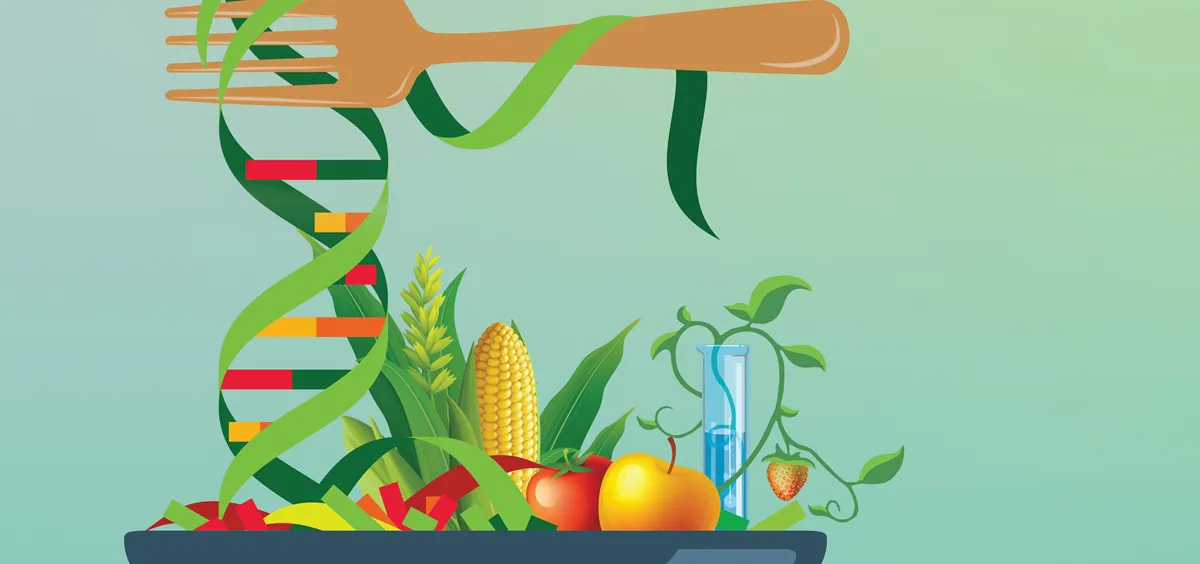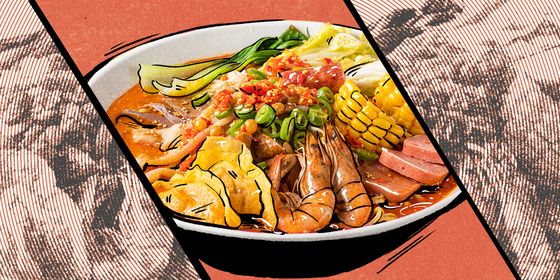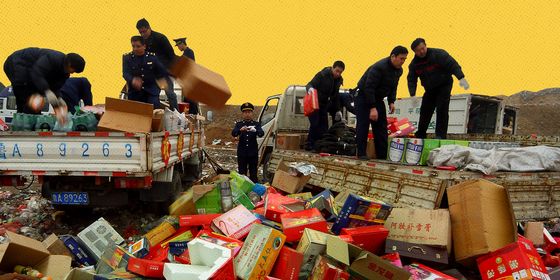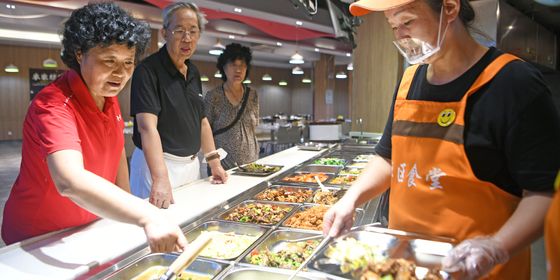Uneven regulations and a skeptical public stall the commercialization of GM foods in China
When China’s Ministry of Agriculture and Rural Affairs (MARA) released a list of 192 genetically modified (GM) food strains awaiting biosafety certification in December last year, the reaction was predictably hostile.
“Reject GM food!” read a comment on microblog platform Weibo, with nearly 5,000 “likes.” “GMO agriculture in China must be totally prohibited!” read another. And finally, “Ban GM crops from entering China’s territory! We must be healthy! We love our land!”
Despite over 30 years of government support for GM research, Chinese consumers have never fully embraced the idea of eating genetically altered food. In recent years, opposition has remained stubbornly high—a 2018 study of over 2,000 consumers found just 11.9 percent were supportive of GM food.
GMOs are plants, animals, or other organisms that have been edited through genetic engineering. Following advancements in genetic science in the 1970s, scientists applied the technique to agriculture to produce crops such as delayed-ripening tomatoes, insect-resistant corn, and pesticide-resistant soybeans. Tomatoes with a longer shelf life were authorized for sale by the US government in 1994, the first GM food approved for public consumption anywhere in the world.
In the 1990s, China was also a world leader in GM research, and became the first country in the world to allow the commercial planting of a GM crop—a virus-resistant strain of tobacco. In 1997, authorities granted a commercial license for the planting of GM cotton, then for GM papaya in 2006.
Since then, though, the development of China’s GM food industry has stalled. In the face of increasing public opposition, China’s regulatory bodies have avoided issuing licenses for more GM foods to be sold to the public.
Hybrid rice is planted in China, but GM rice strains are not yet permitted for commercial production (VCG)
GM strains in China must first receive a biosafety certificate from MARA, and then approval for commercial production before they can be planted and sold to the public. A number of GM crops have the certificate, including varieties of corn, rice, and soy. But since GM papaya in 2006, none have gained permission from MARA for commercial production, effectively blocking them from Chinese dinner tables.
As a result, China’s GM crop acreage fell from fourth in the world in 2002 to eighth in 2016, behind Brazil and India, even though China invested 2.9 billion RMB in the research of new GMO varieties in 2010, and despite President Xi Jinping’s call for agricultural officials to “boldly research and innovate, [and] dominate the high points of GMO techniques” in 2013.
The country still remains one of the world’s largest importers of GM products, while restricting commercial cultivation of GM food crops at home. In 2019, China imported nearly 90 million tons of soybeans, over 90 percent of which are GM varieties, much from the US, mainly used for animal feed and making edible oil.
Though the vast majority of scientists worldwide believe GM foods pose no risks to humans, a 2015 study by researchers at the Beijing Institute of Technology found that the proportion of Chinese consumers who considered GM foods unsafe for consumption rose from 13 percent in 2002 to 45 percent in 2012. Just 25 percent of Chinese consumers indicated they were willing to buy GM soybean oil.
A 2014 anti-GM documentary funded and hosted by former CCTV presenter Cui Yongyuan became a climax in the debate in China and seemed to push public sentiment firmly against GM food. The 68-minute documentary showed the results of Cui’s 2013 trip to several cities in the US, where he interviewed scientists, consumers, and activists opposed to GM foods, and conducted an experiment in which birds allegedly rejected GM seeds in favor of non-GM varieties.
The film received millions of hits in just a few days, but was labeled as misleading by supporters of GM foods, most notably by Fang Zhouzi, an academic who had been embroiled in an online row with Cui on the subject in 2013. Cui also submitted a number of anti-GMO proposals that year to the Chinese People’s Political Consultative Conference (CPPC), one of China’s top parliamentary bodies, and has become the poster child for the domestic anti-GM movement, with nearly 20 million followers on Weibo.
The public, like Cui, is wary of GM technology. “If I have the choice between GM food and normal food, I’ll go with the normal food,” says Zheng Xiang, a 23-year-old from Liaoning province. Under China’s 2015 Food Safety Law, all GM food products must be clearly labeled, and Zheng checks each bottle when picking out cooking oil and soy sauce at the supermarket, making sure to only buy the non-GM kinds.
China is the world’s largest importer of GM soybeans and canola (VCG)
“I saw a report that said eating GM foods can affect your own genes,” he explains, “and I feel bad for animals that undergo genetic engineering. In high school, our teacher told us about gene editing being done to cows…I don’t think it’s fair for the animals to be edited by humans.”
The government has sporadically launched campaigns to increase public knowledge of the science behind GM foods. “In over 20 years, more than 20 countries have planted over 30 billion mu [2 billion hectares] of GM crops…billions of people have used GM foods. There hasn’t been one scientifically proven example of safety problems,” claimed the People’s Daily in January this year.
Chinese policy supports the commercialization of more GM crops. In 2016, the State Council’s Five-Year Plan outlined making GM corn and soybeans ready for public consumption by 2020.
But dissenting voices are still prevalent in the media. In 2013, Peng Guangqian, a retired major-general in the PLA, suggested in the state-run Global Times newspaper that GM foods were part of a US-led conspiracy against China. In October 2018, Wang Xiaoyu, vice secretary of Heilongjiang Provincial Soybean Association, claimed in an interview with the Heilongjiang Daily that GM soybeans had been found to be unsafe.
On social media, articles promoting the perceived dangers of GM foods are common. A widely shared internet post from 2010 alleged that GM corn had damaged the fertility of college students in Guangxi Zhuang Autonomous Region.
An article published on February 20 of this year on news site Jinri Toutiao by a GM technology supporter listed (and refuted) over 40 rumors about GM foods. Among them were suggestions that GM crops cause cancer, that mice populations have plummeted in areas where GM crops have been planted, and that Americans don’t eat GM foods (a belief that perhaps originated from Cui’s documentary, in which he interviewed a number of anti-GM groups in the US, such as “GMO Free Moms,” and visited GM-free markets).
Zheng feels the authorities and industry haven’t done enough to change his mind about GM products. “There are no advertisements from scientists or the government to advocate for consumers to eat GMOs rather than buying normal food,” he argues. “Firstly, the price [of GM foods] isn’t cheaper, and secondly, I don’t know their effects.”
Ruan Sichuan, a retiree in Quanzhou, Fujian province, is also skeptical. “Insects eat [insect-resistant] GM crops and die, so if humans eat it, what will happen?” he asks. Ruan has shared many articles on social media warning of the potential dangers of consuming GM foods. He first became concerned when he read about the volume of China’s soybean imports from the US in 2018, and feels humans should not interfere with the natural world: “We need to respect the laws of nature.”
Ruan also brings up glyphosate, a herbicide used widely in agriculture and potentially linked to cancer, as part of his worries. Some GM foods are herbicide resistant, meaning farmers can spray more herbicides directly onto the plants, which could mean more glyphosate ending up in the stomachs of Chinese consumers.
“You need to study GM food for more time,” Ruan believes. “It needs 10 or 20 years of testing. If there are no bad outcomes, no toxicity, then you can spread it to the public.” In the US, Monsanto, the company that produces the glyphosate-based herbicide Roundup, is currently facing thousands of lawsuits from people who believe exposure to the product gave them cancer.
Public skepticism of GM food isn’t limited to China. In the EU, GM food products must be labeled, and many member states, including Germany and France, have effectively banned the commercial production of GM crops. In the UK, GM foods are not grown commercially, but are imported. A Pew survey in 2016 found that 39 percent of respondents in the US believed GM foods are worse for one’s health than non-GM foods.
In China, prohibited GM foods have periodically been found on supermarket shelves, heightening public worries. In 2005, GM rice grown in Hubei made it onto the market illegally, while in 2015, Greenpeace found that 20 of 21 samples of corn from Liaoning contained traces of GM corn. The NGO also raised concern about a study carried out in China by Tufts University in 2012, in which Chinese primary schoolchildren were fed GM rice by the researchers without their parents’ permission.
These scandals, along with other well-publicized safety incidents—such as the sale of baby formula containing deadly melamine in 2008, or the discovery of defective vaccines on the market in 2018—have undermined public faith in the ability of the government to properly manage and regulate the food and drugs industry.
A survey conducted between 2015 and 2016 by Deng Haiyan, assistant professor at the Beijing Institute of Technology, found just 17 percent of people had confidence in the government’s management of biotechnology. “People are more likely to trust in Cui Yongyuan and those kinds of ‘non-professionals,’” Deng tells TWOC.
Even scientists, who are largely supportive of GM research, seem skeptical of the government’s ability to adequately regulate GM food production. A 2017 study in China Agricultural Economic Review found nearly three-quarters of scientists agreed that China needs to develop its agricultural GM technology, but only 29 percent were willing to buy GM soybean oil, comparable with 25 percent of consumers.
At present there is no all-encompassing law that specifically deals with GM foods. Rather, regulations are scattered across a number of laws and regulations, and it is unclear which government ministry retains ultimate authority for the future development of GM foods, according to Professor Cui Kai, an agricultural specialist from Shanghai Jiaotong University, who has researched Chinese public perceptions of GM foods and gives lectures in support of GM technology.
At present, MARA also acts as both the body responsible for research on genetically modified products and the approval of genetically modified crops—a potential conflict of interest.
Some advocates of GM foods have attempted to take on pop gurus like Cui Yongyuan by promoting “popular science” of their own. In 2016, Xiang Dongliang, a former agricultural reporter, decided to eat GM foods for 100 days and document the process in an attempt to show the public that GM foods are safe. “A lot of people expressed their opposition” Xiang tells TWOC, “but I also found that some, who originally didn’t understand GMOs or were neutral, became supporters of GM food afterward.”
However, Xiang received a number of abusive messages during his project, with some netizens accusing him of representing US interests or receiving money from GM technology companies. Attacks on supporters of GM foods have sometimes become intense. In 2010, Zhang Qifa, a scientist who received permission for experimental planting of an insect-resistant rice species, was heckled during a lecture he was giving on GMOs in Beijing: “Zhang Qifa is a traitor!” an audience member shouted; a mug was thrown at Zhang, narrowly missing him.
“GM foods in China are special because those on both the political left and the political right hate them—this is really rare,” says Xiang. “On the right…they don’t trust in the government’s credibility. On the left, they hate it from the position of nationalism, [as] most of the GM technology is held by the US.” A research paper published in 2018 by Professor Cui Kai notes that 14 percent of consumers believe that GM technology represents a form of bioterrorism against China by the US, and agreed that “patriots should oppose GM food.”
Regardless, the government seems to be pushing ahead with the development of GM foods. In December, along with the 192 GM plant species approved for biosafety certification, China authorized two new GM crops for import from the US (one soy and one papaya) as part of the recently concluded Phase 1 trade deal between the two countries. Cases of industrial espionage, such as that of Mo Hailong, a Chinese national who pled guilty in 2016 to stealing GM seeds owned by Monsanto in Iowa, demonstrate the value of the technology.
Professor Cui estimates it will take 20 years before the public is ready to accept GM foods. “The divide is already very clear; some people support it, some oppose it…their attitudes have already solidified,” he says.
Ruan remains unmoved for now, whatever the government’s plans. “We need to improve the transparency of GM research…the public have the right to know and the right to decide,” he says.
Until then, he relies on what hearsay and information he can get: “I’ve heard that the Ministry of Agriculture doesn’t even serve GM food in their canteen.”
Unnatural Selection is a story from our issue, “Grape Expectations.” To read the entire issue, become a subscriber and receive the full magazine.













